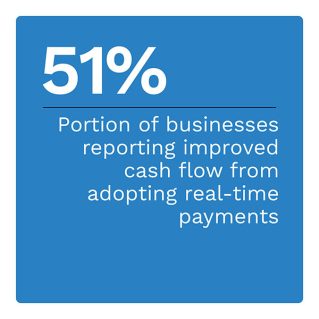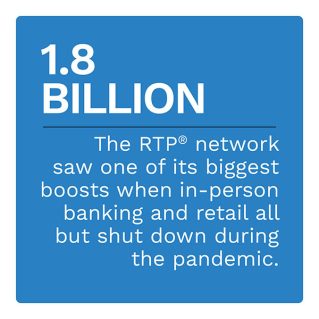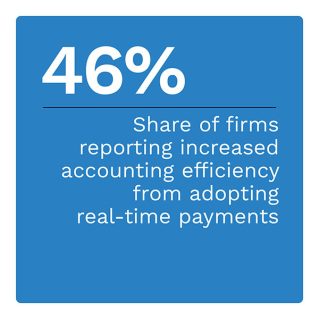Real-time payments have become table stakes for countries worldwide. Europe has more than half of the world’s real-time payment-enabled markets, with 20 nations now using the Single Euro Payments Area (SEPA) Instant Credit Transfer scheme. Asia also has a substantial real-time payments presence, with 13 markets currently offering these payments. India and China now lead in real-time payments volume, an unsurprising development considering their massive populations.
The Clearing House’s (TCH’s) RTP® network is the American answer to these emerging real-time payment systems. The RTP network has seen widespread popularity since its implementation, and TCH has made significant changes to meet customer expectations. By responding to new needs that arise with its growth, TCH can continue to provide instant payments to a huge variety of businesses and individuals for years to come.
This edition of the “Real-Time Payments Tracker®” examines milestones the RTP network has passed since its launch, its growing popularity with businesses and consumers and its impact in the last five years.
Around the Real-Time Payments Space
TCH’s RTP network celebrated its fifth birthday this year and has seen several milestones since its launch. The network currently reaches 62% of demand deposit accounts in the United States, and 289 banks and credit unions (CUs) now leverage the network to provide instant payments to their customers. Q3 2022 alone saw 45 million transactions totaling $19.7 billion. TCH reported that more than 80% of the financial institutions (FIs) leveraging the network are community banks and CUs with less than $10 billion in assets.

The European Union is taking a more aggressive approach to instant payments than much of the world. A new proposal would require EU banks to offer customers instant payments. The aim is to foster a Europe-first payments environment that could supplant the current environment dominated by American card companies. Currently, consumers make just 11% of EU payments via instant payment networks. Banks that do not use the euro will have longer to comply with the proposal than those within the Eurozone.
For more on these and other stories, visit the Tracker’s News and Trends section.
JPMorgan Hints RTP Network Could Disrupt Cross-Border Payments
The RTP network is well-positioned for a prosperous future if it plays to its strengths and brings instant payments to new market segments. Cross-border payments are one such arena that the RTP network has the potential to disrupt, but this will require in-depth international cooperation to ensure that businesses and consumers are not hampered by competing national regulations.
In this month’s Insider POV, Rupa Krishnan, head of global real-time payments at JPMorgan Chase & Co., explores possible new use cases and future directions of the RTP network.
Marking the Milestones and Impact of the RTP Network
The RTP network now services 61% of demand deposit accounts in the U.S., and nearly 90% of FIs have the technical capability to join the network. The network offers secure payments that settle in seconds and payment messaging capability, digital commerce services and a host of other features that have driven banks and businesses to join in droves.
This month’s PYMNTS Intelligence explores the network’s growth over the past half-decade and details the most significant milestones along the way, including the impact of the pandemic.
About the Tracker
The “Real-Time Payments Tracker®,” a collaboration with The Clearing House, examines the impact of the RTP® network on its fifth anniversary and milestones reached since its launch.

